

Marvel Comics Presents ran for 175 issues from 1988 until 1995. Each issue included four eight-page stories with typically two or three on-going features (and no ads). It spotlighted some of the leading creators of mainstream comics over a period of precipitous economic growth and even more rapid decline. Reading through it is an opportunity to revisit any number of weird aspects of 90s superhero comics. This blog is a primitive, oddly regimented, manifestly scattershot crawl through an often disappointing but occasionally splendid comic. All image copyrights are Marvel's. Issue credits linked below. Updated on Wednesdays.
Marvel Comics Presents #37: Late December 1989(5.20.20)
Credits: grandcomicsdatabase
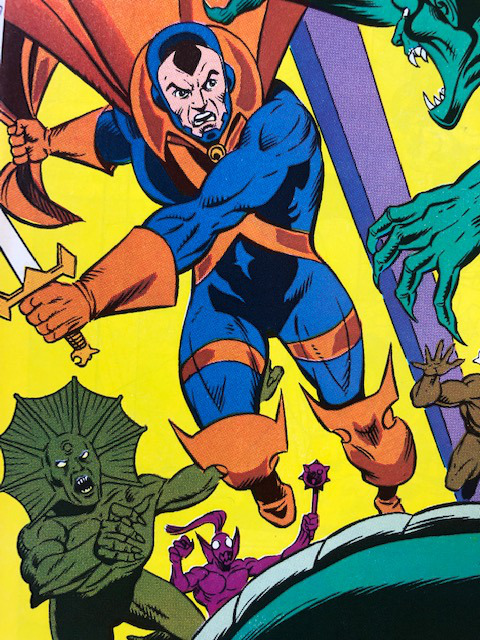
This Cockrum cover is a mess with a stiff Black Panther and a nondescript dragon lashed to some train tracks. I'd wager, though, that there was an editorial intervention that swapped the front and rear covers. Notice that there's ample open space at the top of the Devil-Slayer rear cover, which looks like more typical cover fare. It's not hard to see, however, the questionable appeal of elevating the decidedly C-list Devil-Slayer to the front cover for sales purposes. There's also a covert cameo: a conspicuously Despero-like monster is mucking around, third eye a-blinking.
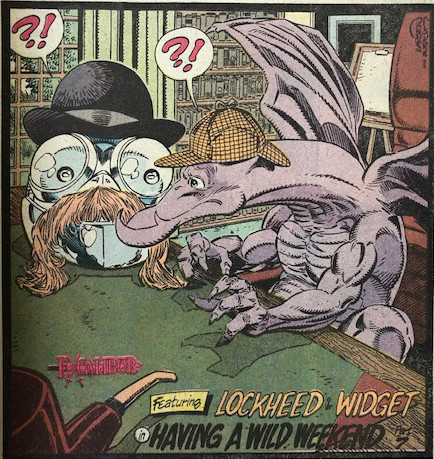
A. Excalibur, "Having a Wild Weekend" [7/8]
Mistaking the frantic for the madcap or the frenetic for the whimsical has been a big part of the tedium of this feature, but this outing shows that it's not entirely beyond Higgins and Larsen. There's a fun suite of pantomime pages with Lockheed and Widget paling around in Sherlock Holmes attire before they bump into a cramped and not-really-coherent Snidely Whiplash/Get Smart predicament. Thing quickly turn into undifferentiated nonsense as evidenced below. 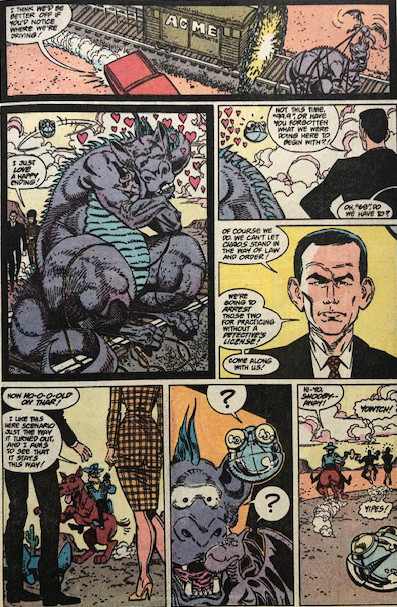
The pivot in pace is an unqualified bummer halfway through this feature and, despite some expository blathering and a promise of some sort of resolution, this just feels tired and tiring.
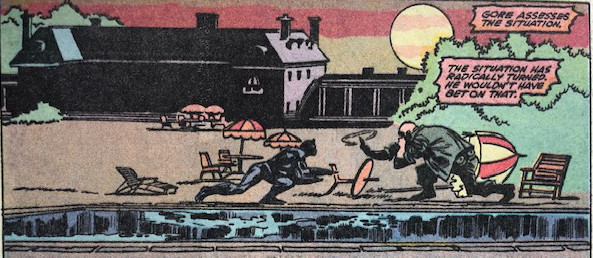
B. Black Panther, "Panther's Quest" [25/25]
Not much of a finish to this lengthy, fairly shaggy, but occasionally vibrant feature. T'Challa kills Gore after a reasonably energetic and ably choreographed fight, but, while Colan is in good form, Palmer's work is at its worst. In a shadowy evening scene, Palmer flattens out Colan's whispy, sweeping textures and pulls any features out of the tightly framed faces. Narratively, it's a weirdly unsatisfying mess. Ramonda is pressed to explain the not-quite-convincing circumstances of her lengthy imprisonment and her husband's abject failure to find and save her. She's also forced to provide a kind of second-hand psychological assessment of Pretorius, who gets painted (distressingly and bizarrely) as sexually obsessed with Ramonda and engrossed in self-hatred for his own sexuality.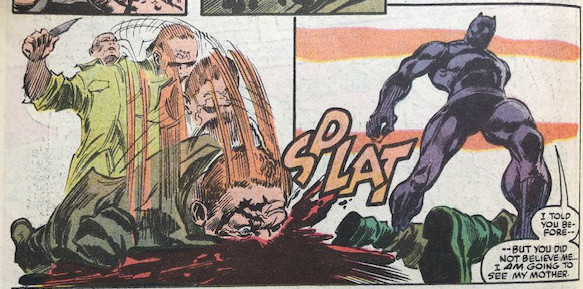
Ramonda spares his life and overtures are made this is somehow a just punishment, but the rapidity with which the ground gets covered and the iffy presentation of the psychological pretense leaves a pretty remarkably hole at the center of a story--again, it's worth saying that, at this incredible length, MacGregor had time enough to figure things out. It's conspicuous that, for a story bound up with South Africa and apartheid, the final pivot to something half-baked and highly personal rather than the structural injustice endemic to the country is pretty strange. Perhaps MacGregor intends Ramonda's circumstances as a kind of microcosm, but, if so, this seems like an even steeper failure.
It's hard not to think that, in contrast to "Panther's Rage," MacGregor ultimately had little to say with this feature and certainly there's nothing here that fees groundbreaking or comparably substantial even if, by familiar standards, this credible enough drama. (It's straightforward enough that, in writing about this feature, MacGregor--unlike many of his colleagues--is worth talking about.) For all that, it's been a reminder of the strength of Colan's style and inventiveness and, given license, his mastery of shattered panel layouts and merely suggested panel borders. Finally, mostly importantly, and crucially: Rosen's lettering in this feature was a disastrously ill-conceived, distracting, and it's incredible he and editorial stuck with it.
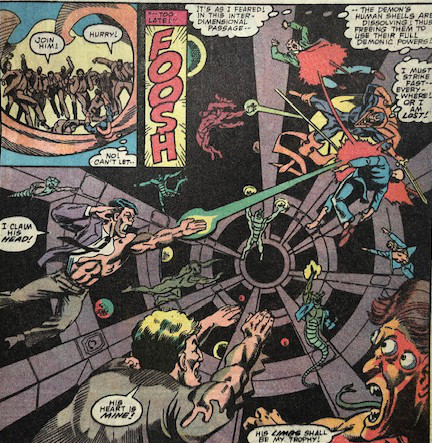
C. Devil-Slayer, "To Slay the Devil"
The publication history of this character is all sorts of convoluted and there's vanishingly little that distinguishes his design from DC's Nightmaster, so it's a entirely left-field choice for a feature, though, admittedly, not much stranger than the run of Lobdell C-listers. Certainly, this feature does nothing to help the broader fate of the character. Apparently, Devil-Slayer squares off against some demons which are after some sort of sword or cloak or something. There's some hasty, undercooked interdimensional blah blah and some super deep cuts from the Defenders, but this all of dubious coherence and--quite honestly--exceptionally little interest. Rodney Ramos deserves some credit for compressing matters at even the vaguest degree of comprehensibility and holding out in the face of some questionable inking, which flattens most everything out into Ditko homage. 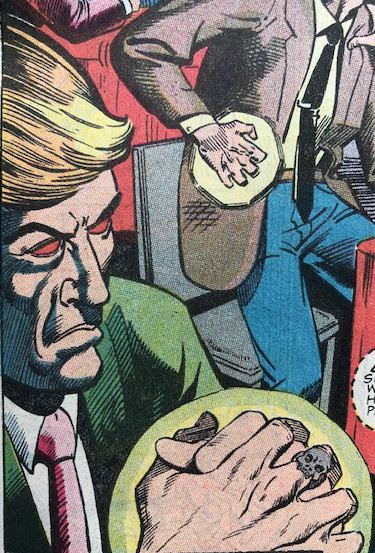
Perhaps this would've worked as a back-up feature in a Defenders annual, but, ultimately, the only thing that sticks here is the uncanny Trump energy of this demon milling about in the foreground.
Power Ranking: Black Panther (B-), Excalibur (C+), Devil Slayer (C)